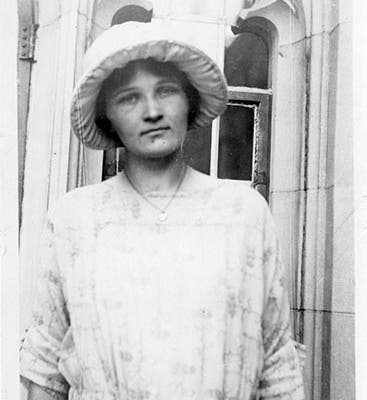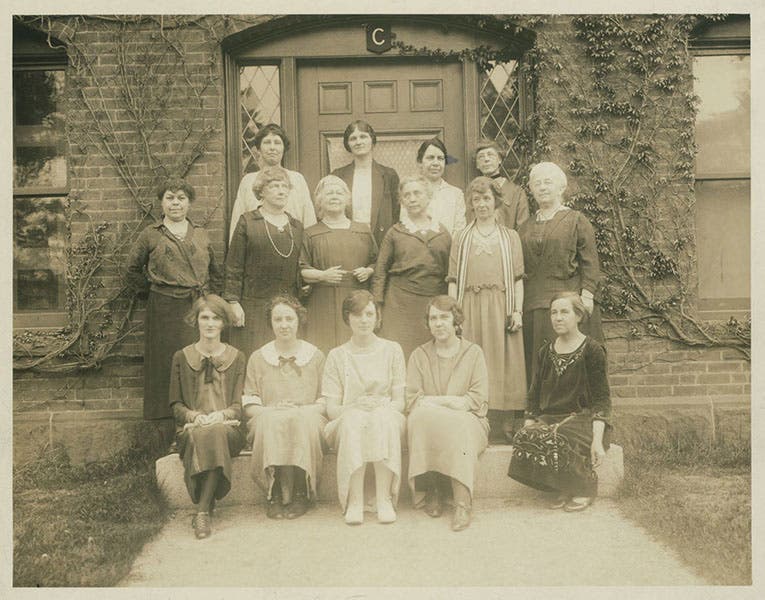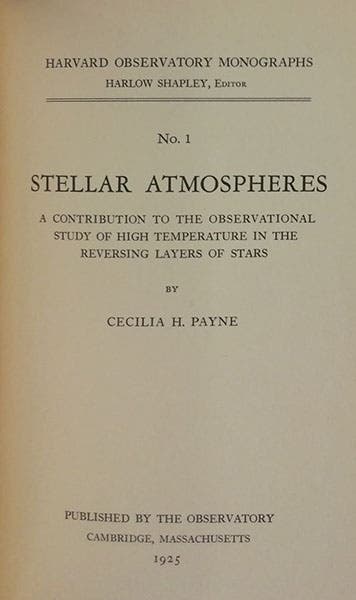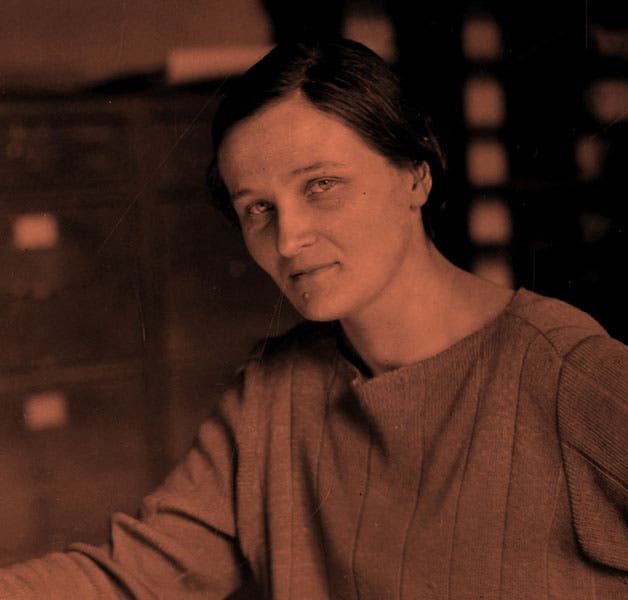Scientist of the Day - Cecilia Payne-Gaposchkin
Cecilia Payne-Gaposchkin, an Anglo-American astronomer, was born May 10, 1900. Completing her undergraduate education in Cambridge, England, she realized early on that the array of opportunities for a woman astronomer in England was very small, so after meeting Harlow Shapley, the new head of the Harvard College Observatory, when he spoke in London, she crossed the pond in 1923 and took up a fellowship at that other Cambridge, the one in Massachusetts. Harvard was one of the few places in the world that employed women astronomers, a legacy of the Draper catalog project that we have mentioned several times in these anniversaries. The Harvard "women computers" by 1920 had classified almost 400,000 stars by spectral type, assigning them to letter-labeled categories such as A stars, G stars, and K stars, but no one understood how an A star differed from a G star, except that it had a different spectrum.
Payne (she was single then) had been trained in quantum physics and atomic structure, unlike any other Harvard astronomer, and she decided to look at the physical basis of spectral differences in stars for her PhD thesis, which she completed in 1925. It was the first PhD in astronomy ever granted to a woman by Radcliffe College, then the sister college of Harvard. Payne discovered that stars differ in temperature: the A stars are very hot, the G stars only moderately hot, and the K stars are cool, at least by stellar standards. She also showed that the intensity of spectral lines has little to do with the abundance of the elements that produce them and everything to do with the temperature. She further revealed – still in the same thesis – that stars, including the Sun, are mostly hydrogen and helium. In fact, stars have a million times more hydrogen than they do iron or sodium or oxygen, the elements that are responsible for prominent lines in the spectrum of the Sun. It took some time for astrophysicists like Henry Norris Russell, at Princeton, to come to terms with that shocking claim, but Payne turned out to be correct on all of her assertions.
Shapley was so impressed with Payne’s work that he started a new series, Harvard Observatory Monographs, to publish Payne’s thesis, titled Stellar Atmospheres (Monograph no. 1) in 1925. Several eminent male astronomers have since called her dissertation the most brilliant PhD thesis ever written in astronomy – and they didn’t add “by a woman.” Payne married a Russian émigré, Sergei Gaposchkin, in 1934, and she taught at Harvard for the rest of her life, although she had no title for many years, and her courses were not even listed in the college catalog until 1945. Not until 1956 was she made a professor and full member of the Harvard faculty, 9 years before retirement age. In her autobiography, she did not have kind things to say about the innumerable obstacles that were placed in the path of women like herself who sought professional advancement in the male-dominated world of astronomy. But she was the one who showed the folly of those obstacles, demonstrating with her own hard-won success that a woman could be fully competitive with men, even in highly complex fields such as astrophysics and quantum mechanics. She provided the essential role model for nearly every woman astronomer working today, and indeed, for quite a few men.
We do not have a copy of Stellar Atmospheres in our collections, although we would certainly like to add it. We do have a copy of Harvard Monograph no. 3, Stars of High Luminosity (1930), also by Ms. Payne, as well as a number of her later works.
Dr. William B. Ashworth, Jr., Consultant for the History of Science, Linda Hall Library and Associate Professor, Department of History, University of Missouri-Kansas City. Comments or corrections are welcome; please direct to ashworthw@umkc.edu.









